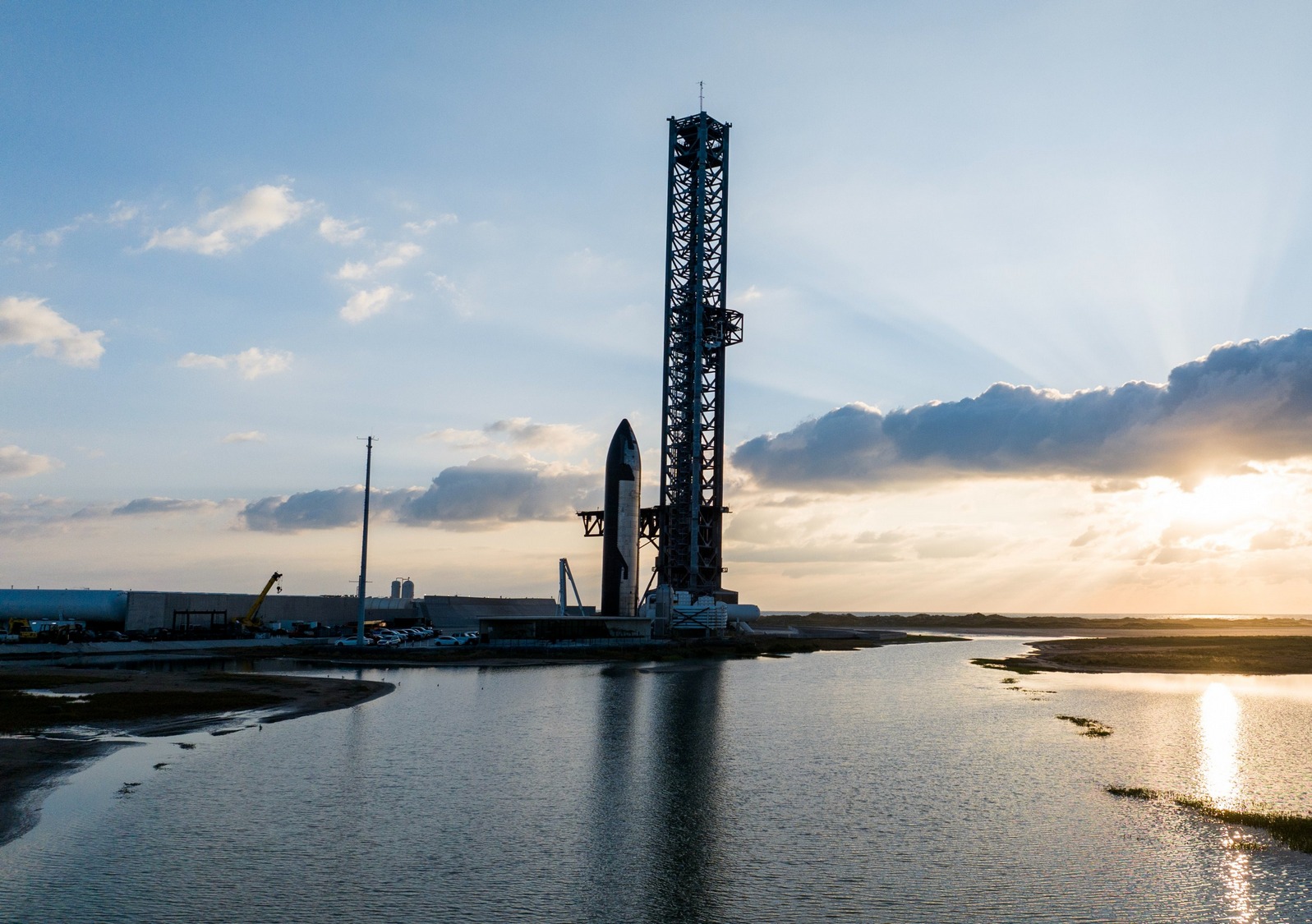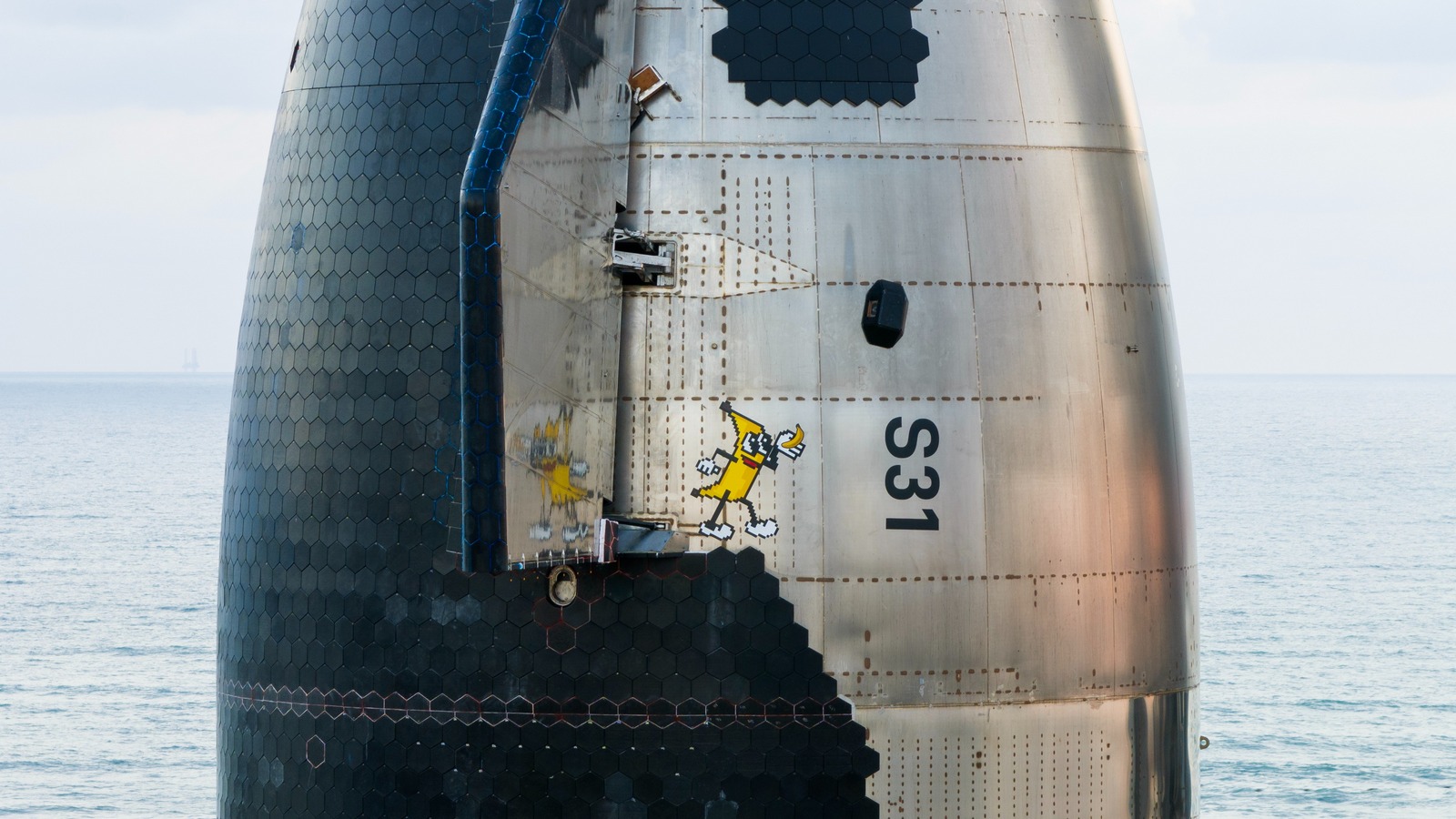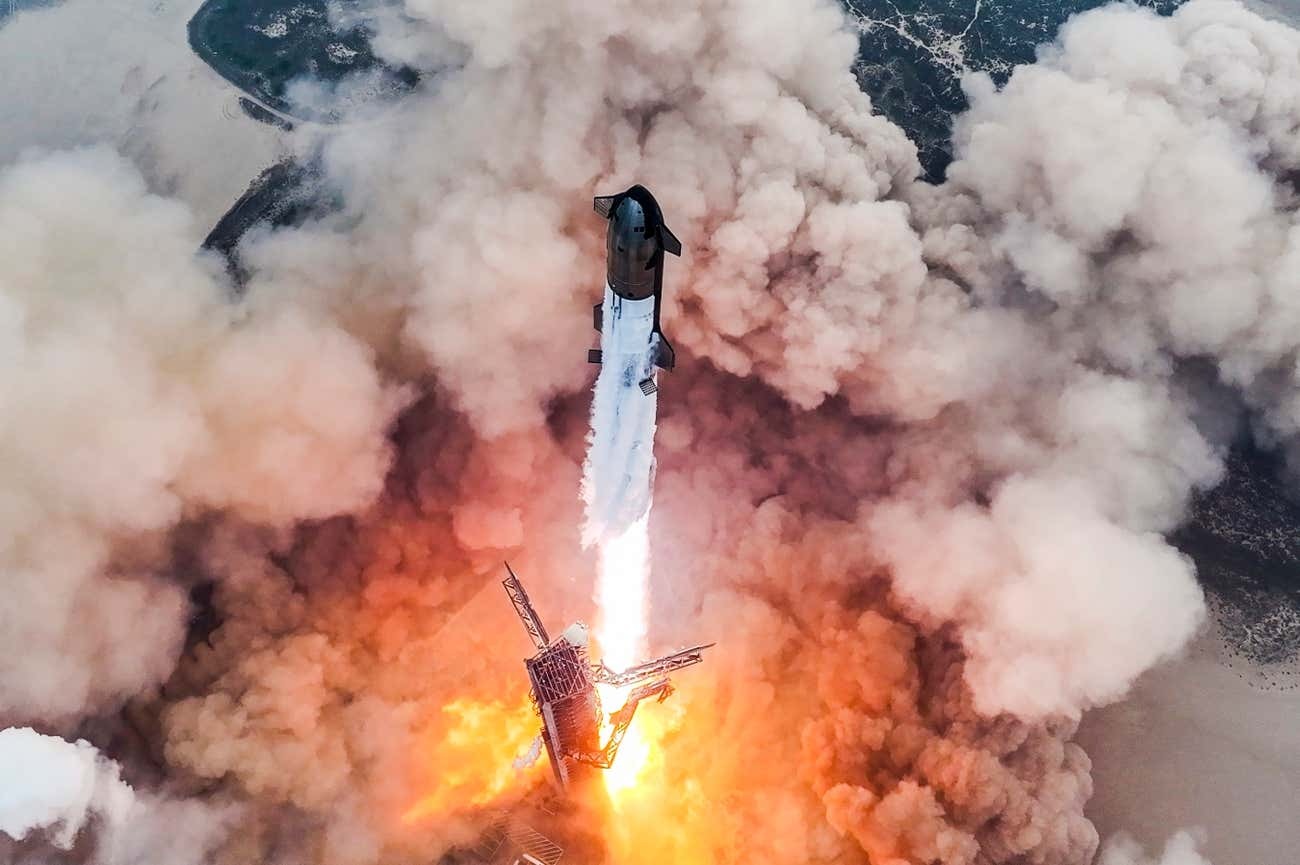SpaceX on November 12 transported the 31st Super Heavy booster to the launch pad ahead of Starship’s sixth test launch, which is scheduled for November 19. The next flight will be different from previous ones because of some changes made to the rocket’s design, which is just the beginning of extensive improvements.

A key step toward launching the mission is the Starship 31 relocation, which took place Monday evening. Unlike previous models, several heat shield tiles on the side of the spacecraft were removed to adapt it to the launch tower. Completion of the flight, as last time, will occur by capturing the first stage with the Mechazilla tower, marking the final step towards a fully reusable spacecraft. During the sixth flight, SpaceX will again guide the spacecraft to land in the Indian Ocean, but this time it will happen in the afternoon.

Careful observers have also noticed that one of the photos of the spacecraft’s hull reveals a noticeable artistic decoration – a pixelated, smiling cartoon banana with a banana in its hand. Apparently, this is a reference to the “banana for scale” joke that engineers and other aerospace professionals like to make, including United Launch Alliance CEO Tory Bruno.
Starship moved to the pad at Starbase in advance of our sixth flight test pic.twitter.com/u6Mbc35ARr
— SpaceX (@SpaceX) November 12, 2024
During the last missions, the accuracy of landings has increased significantly. For example, during the fifth flight, the spacecraft perfectly reached the landing zone, where SpaceX had placed a special buoy in advance. After several successful missions, the company plans to use the tower’s arms to return Starship to the pad rather than the ocean.
End of the age of Starship V1
Starship 31 flight will be the last in the first phase of testing. A year ago, Elon Musk announced the preparation of new and improved Starship V2, so the seventh flight will be the first launch of the second stage. This new model will have expanded fuel tanks and a smaller payload bay, although the overall height of the spacecraft will increase slightly. The reduced cargo bay is a temporary step toward Starship V3, which will already be able to hold larger payloads for missions to Mars.

The first stage of the Super Heavy rocket will also undergo changes. Specifically, the fuel tanks will be expanded to provide more power for the new Raptor 3 engines. A number of upgrades are also underway to improve reliability and efficiency.
The sixth flight will be the completion of the first phase of Starship tests, and the company will move closer to creating a reliable reusable spacecraft that can change the approach to commercial launches.
We previously reported on how SpaceX was preparing for a dangerous maneuver to refuel two Starship in space.
Provided by Space


